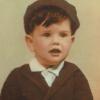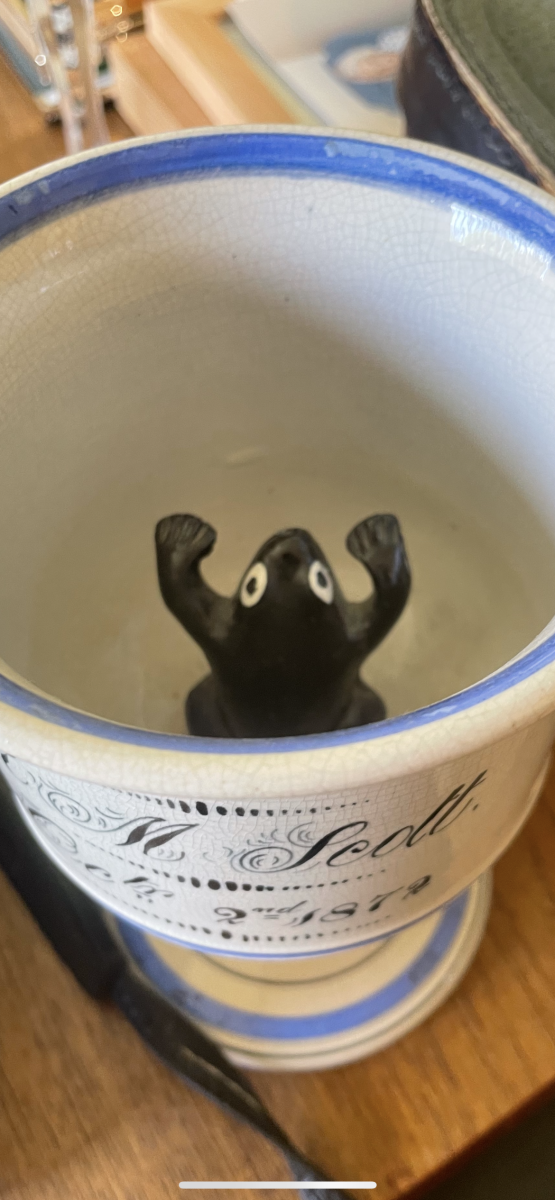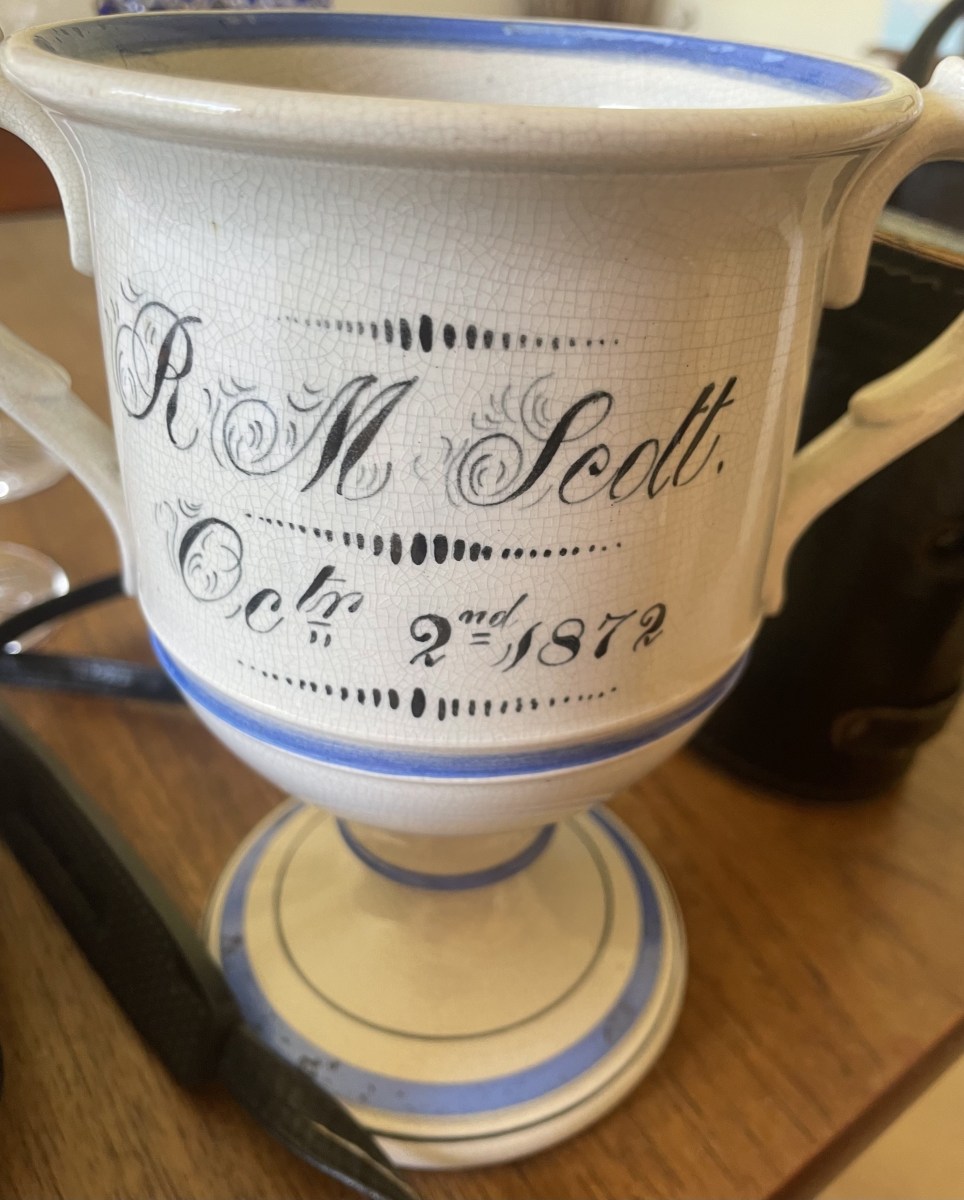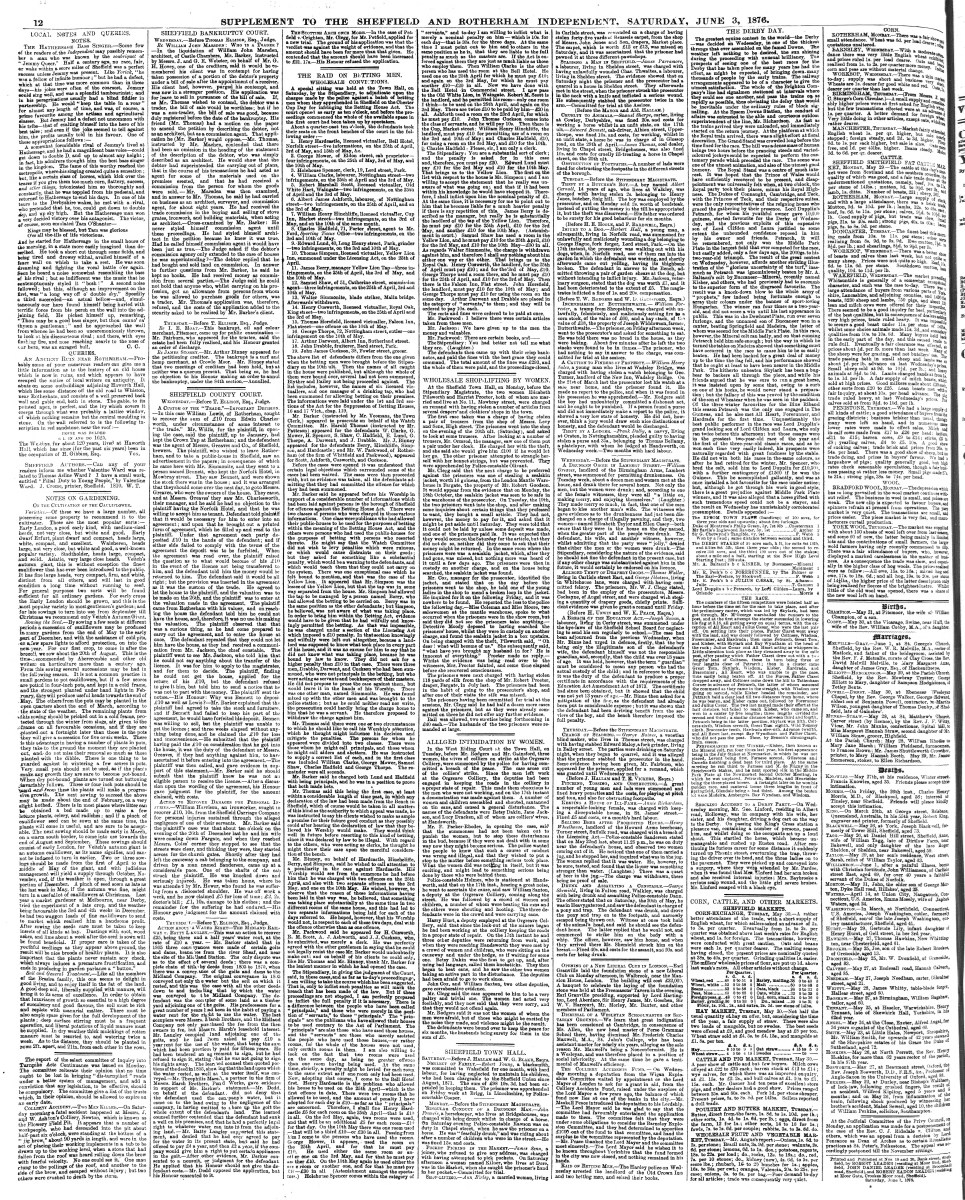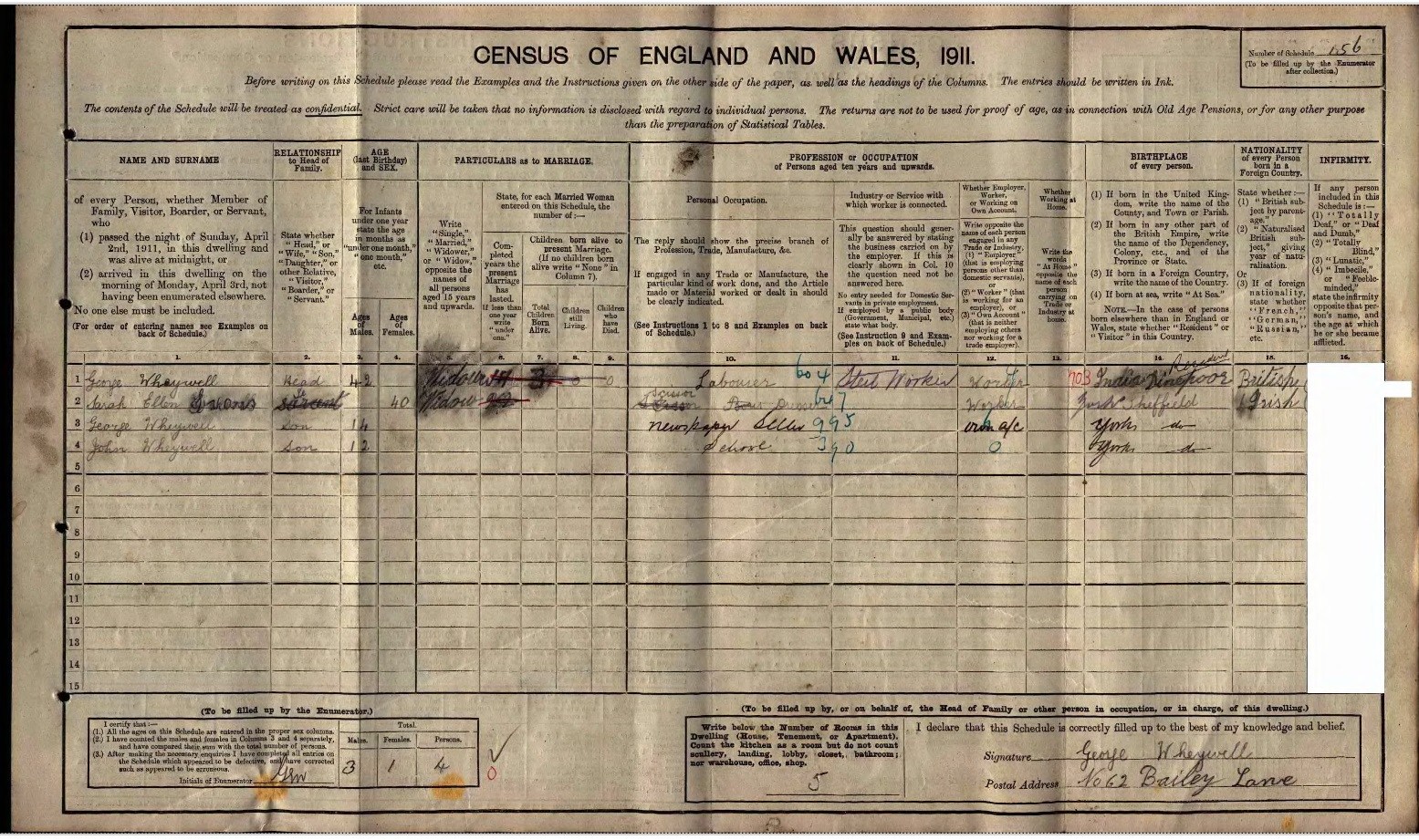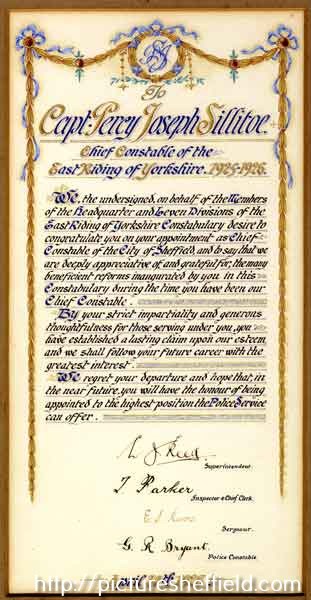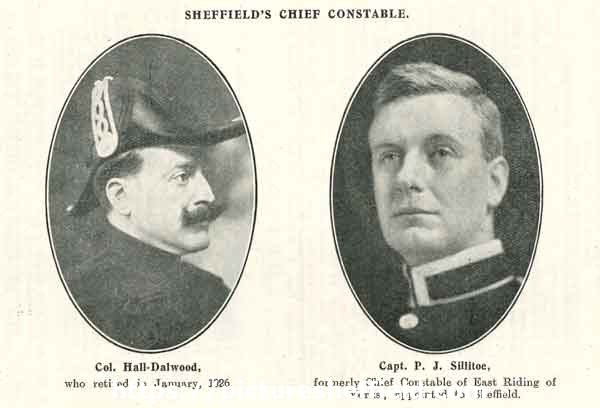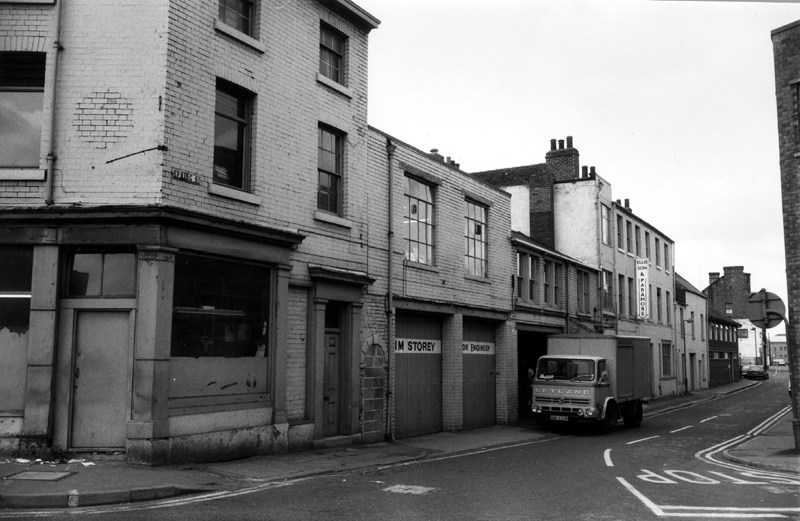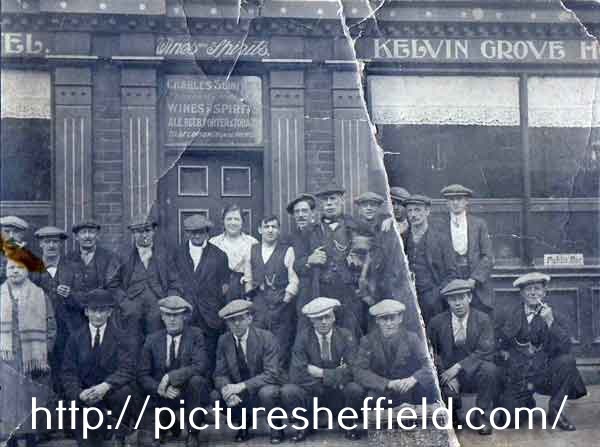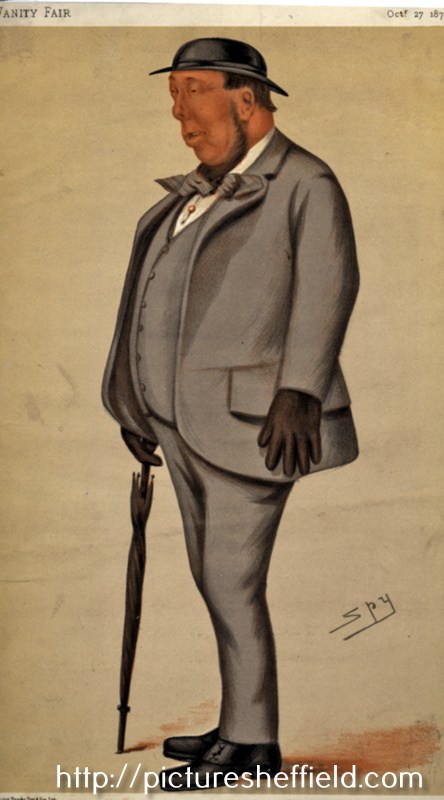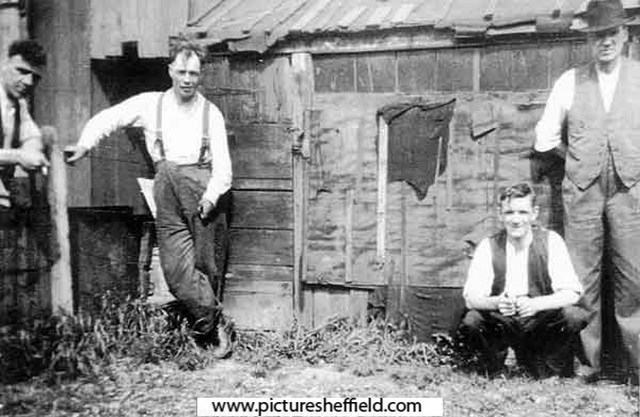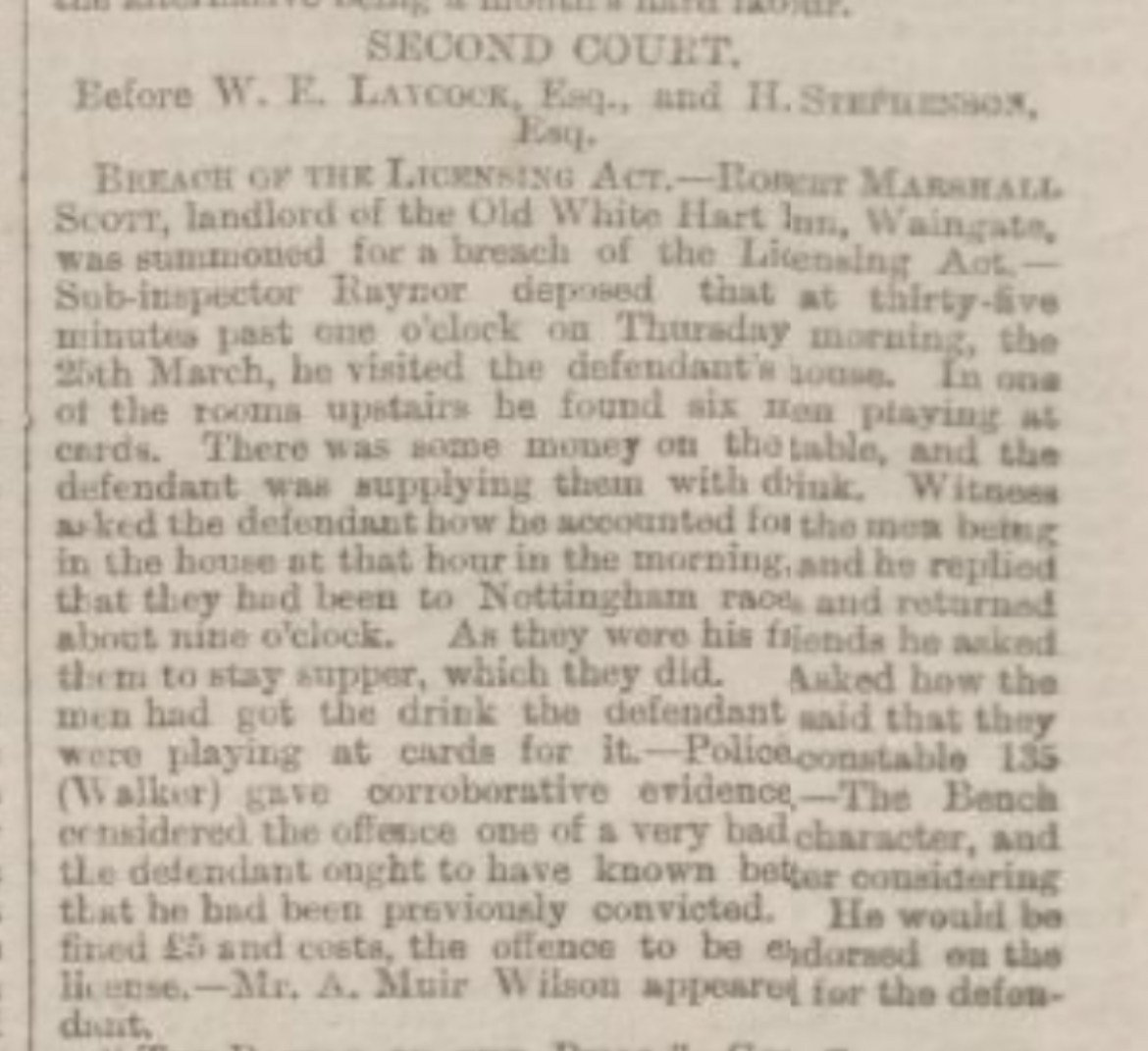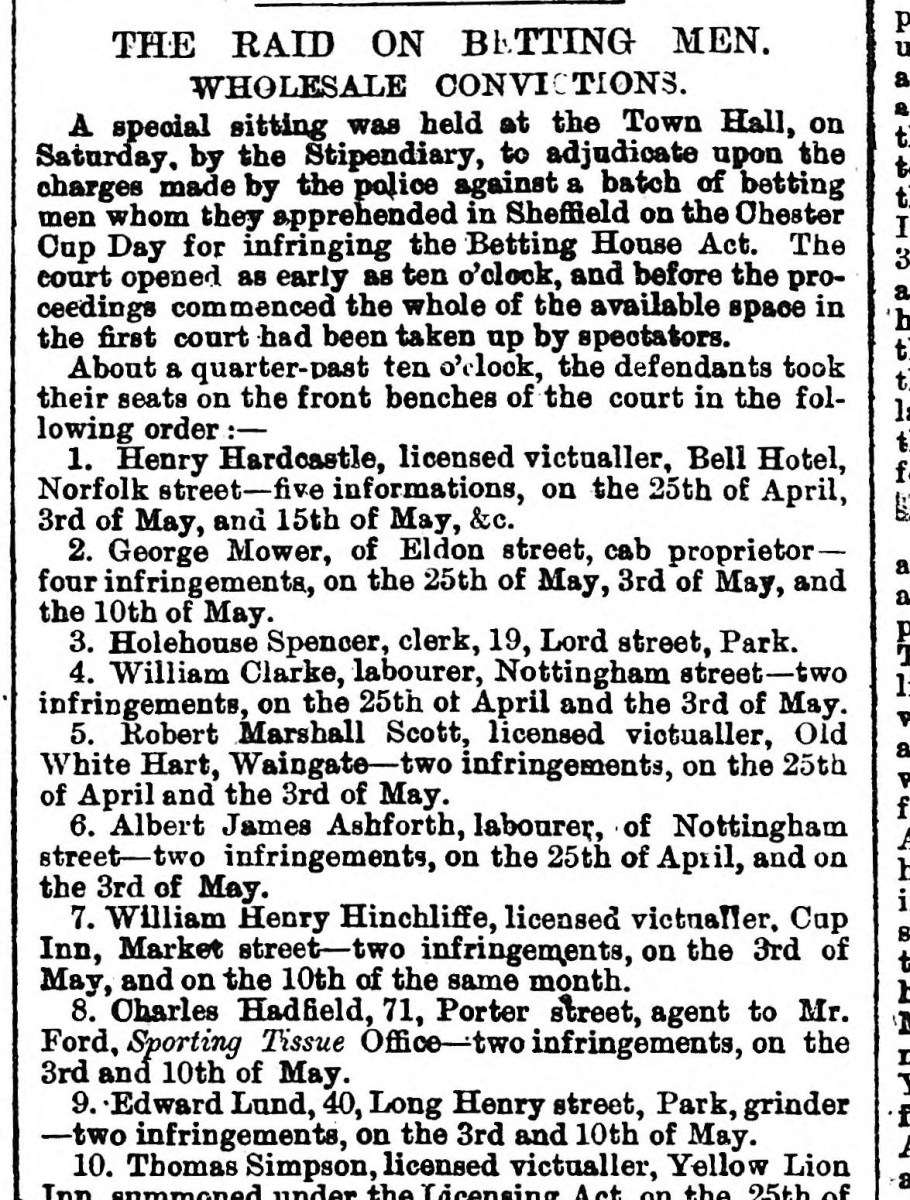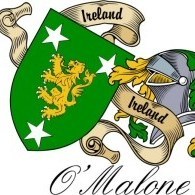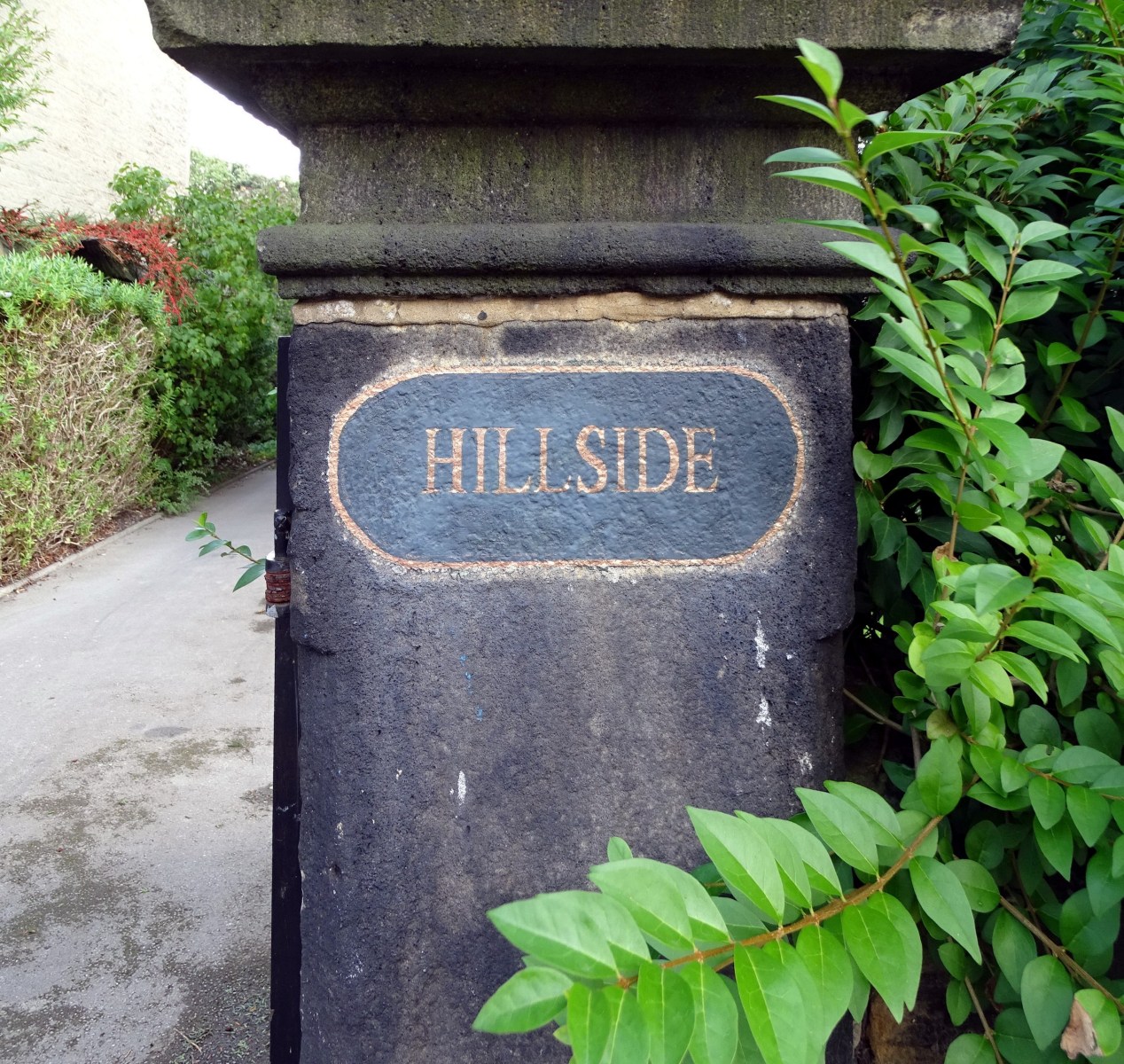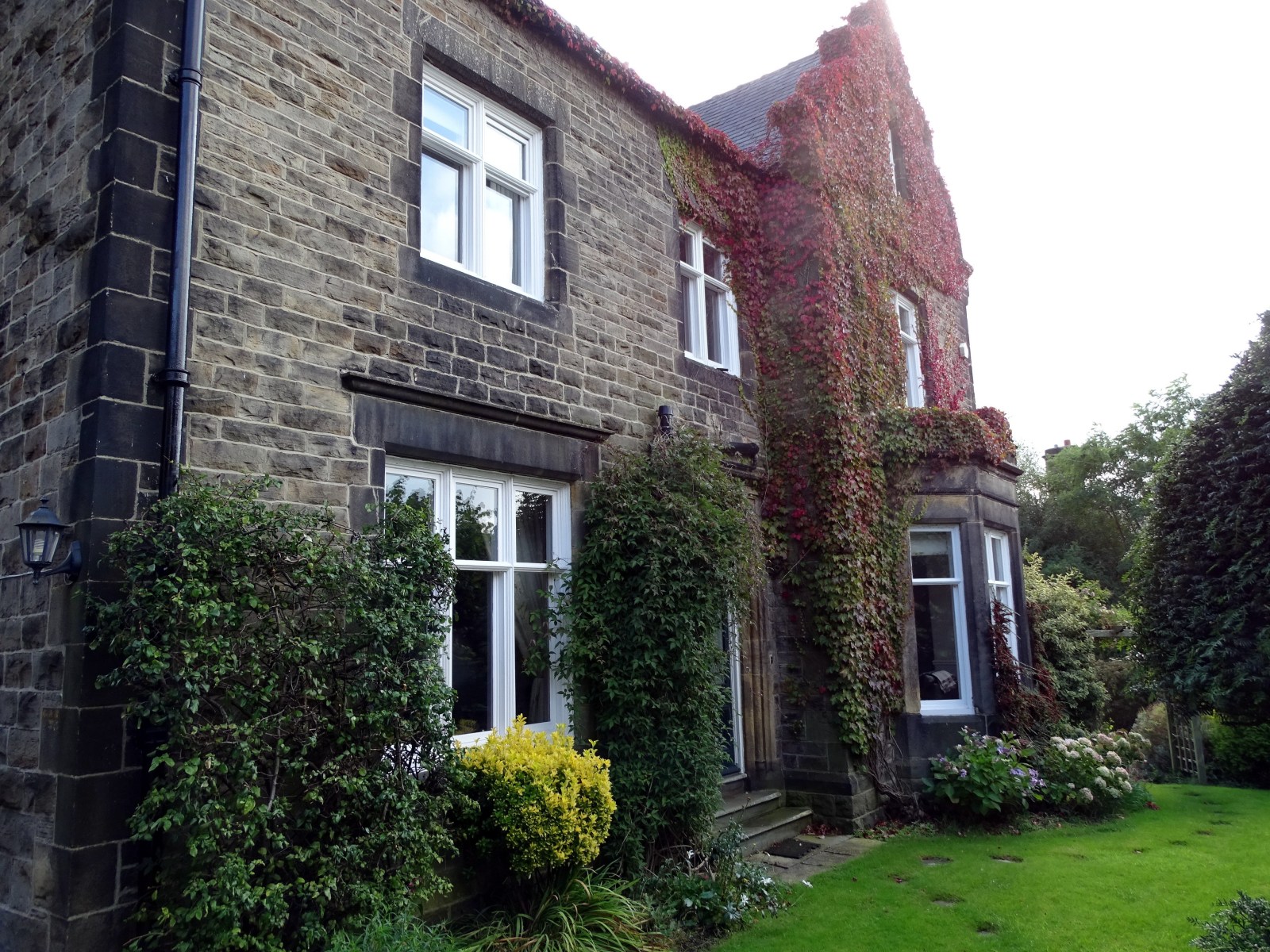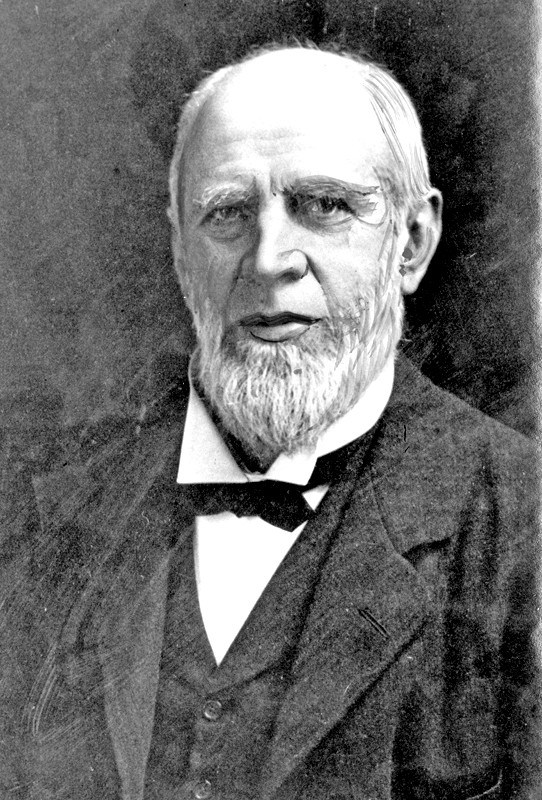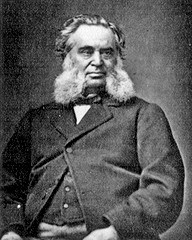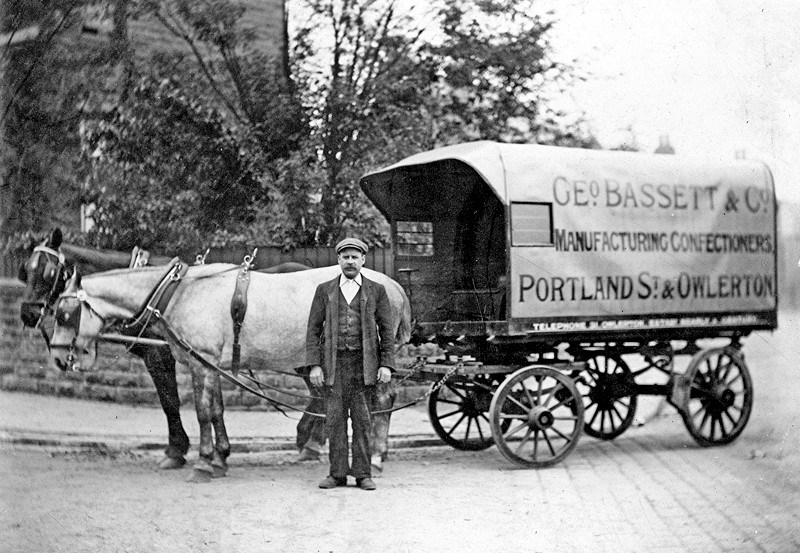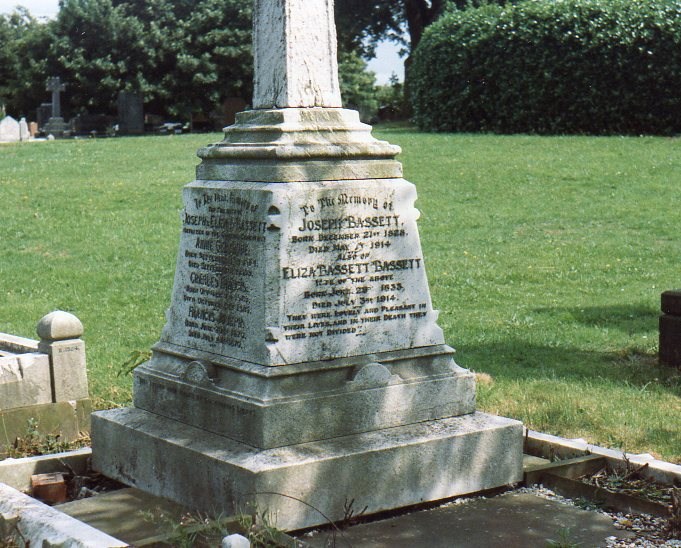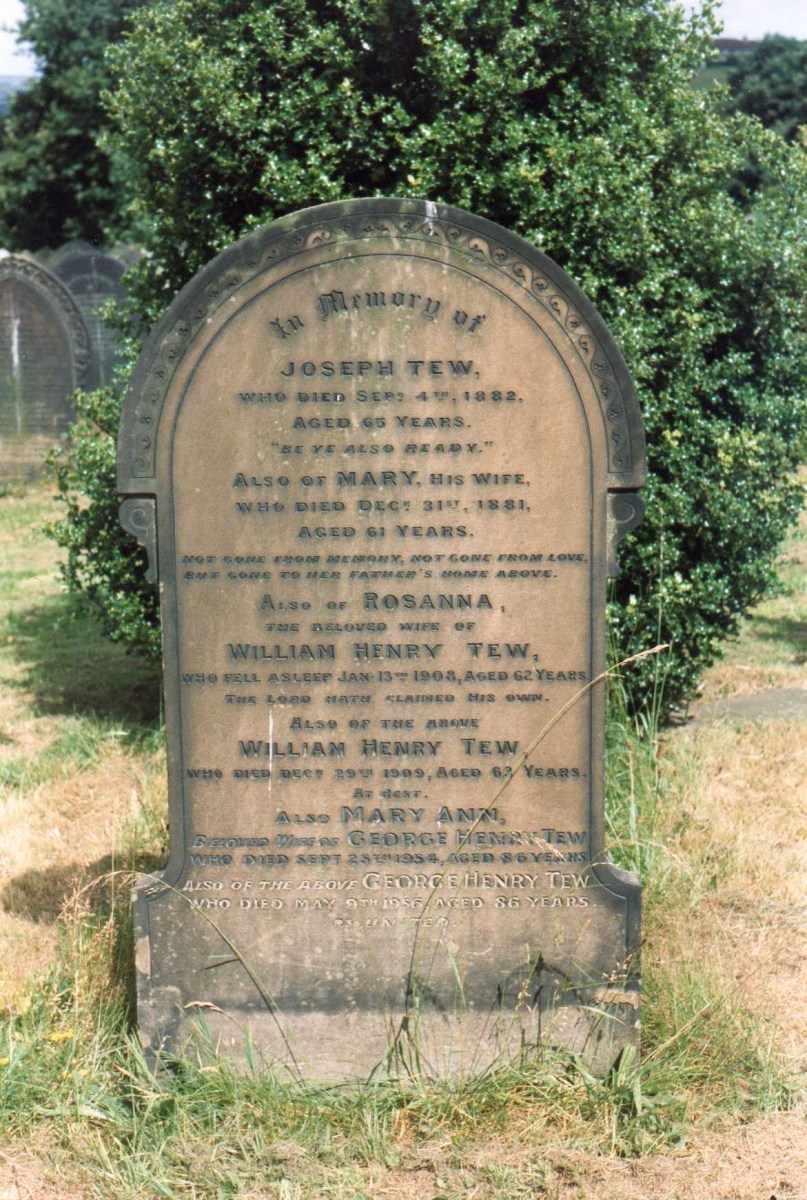All Activity
- Today
-

Sheffield City Airport
Lysanderix replied to Lysanderix's topic in Sheffield Buses, Trams and Trains
Wesley Airport has a nice ring to it…but, I wonder, how many of todays travellers will have heard of him.? My view is that the proud Burghers of the City of Doncaster will go for that name as a bit of an insult to its bigger neighbour. Having for a few years worked in the Doncaster area ,I must confess amongst those I met Sheffield wasn’t liked…except for Meadowhall…..and locals couldn’t see why Sheffield was included in the name of their airport… Sheffield appears to have washed its hands of aviation…becoming ,as was threatened in the 1950s by the then Chairman of BOAC...an Aviation Wilderness”……having closed its own City Airport after refusing to join other authorities .,years ago.,in creating East Midlands Airport and being very quiet over the desirability of re opening Finningley.. -
Lysanderix started following Sheffield Betting ring raids of 1876, various Sheffield pubs
-

Sheffield Betting ring raids of 1876, various Sheffield pubs
Lysanderix replied to Aaron James Hartley's topic in Sheffield Pubs and WMC's
My first employers had a workman who took and laid bets. He was crippled following a War wound and I reckon that was why Management turned a blind eye to his activities. I imagine other steelworks had similar entrepreneurs! -
UPDATE:- As soon as the new admin block had been finished in 1899, the old block was demolished the building of the new central block was started. By July 1902 it was finished and was in use. This new block contained five new wards all of the five wards all of which were named after past benefactors of the hospital and one was the 'May' ward. At this stage I can only confirm three of the five wards on the new block I dont know which of the wards listed below were the other two. A list of all wards are in the Royal Hospital Annual reports: Arthur Jackson Ward, Littlewood Ward, May Ward, Casualty Ward, Bingham Ward, Bernard Wake Ward, Norfolk Ward, Fred Osbourn Ward, Arthur Hall Ward, Keeling Eard, & Edgar Allen Ward Thank you for all the input it is very much appreciated.
-

Sheffield Castle - Excavating the Castle ruins..
Ponytail replied to Sheffield History's topic in Sheffield History Chat
Undocumented steelworks unearthed at Sheffield Castle Site. https://www.bbc.co.uk/news/uk-england-south-yorkshire-68899320 -

Sheffield Betting ring raids of 1876, various Sheffield pubs
Aaron James Hartley replied to Aaron James Hartley's topic in Sheffield Pubs and WMC's
Also kind of related, i’ve been trying to find some information out about this jug, or what the date may resemble, with no success. I thought it maybe a Victorian drinking game, fuddle cup. The date on it does seem to match with the pub on waingate though. -

Sheffield Betting ring raids of 1876, various Sheffield pubs
Aaron James Hartley replied to Aaron James Hartley's topic in Sheffield Pubs and WMC's
-

Sheffield Betting ring raids of 1876, various Sheffield pubs
Ponytail replied to Aaron James Hartley's topic in Sheffield Pubs and WMC's
Yes Edmund, it seems Henry Steel made his money from "betting" at the same period in history as the Publicans in the original post, who were being taken to court for being "bookmakers" Using his gains to finance a steel firm. https://sheffielder.net/2020/04/10/henry-steel/ Not sure of the law on betting at the time, hope someone can enlighten us. -

Sheffield Betting ring raids of 1876, various Sheffield pubs
Edmund replied to Aaron James Hartley's topic in Sheffield Pubs and WMC's
Presumably Henry ran Steel Peach and Tozer. He lived at Tapton Court on Shore Lane. -
-

Sheffield gangs and gang wars
Ponytail replied to Sheffield History's topic in Sheffield History Chat
Illuminated letter to Captain Percy Joseph Sillitoe (Chief Constable of the East Riding of Yorkshire) congratulating him on his appointment as Chief Constable of City of Sheffield. 29th April 1926. arc02603 Signed by: L. J. Reed, Superindentent; T. Parker Inspector and Chief Clerk; E. S. Ross Sergeant; G. R. Bryant Police Constable. Sir Percy (22 May 1888 - 5 April 1962) was born in London in 1888. He served in the South Africa Police, later becoming Chief Constable of Chesterfield in Derbyshire and then the East Riding of Yorkshire. He was appointed Chief Constable of the City of Sheffield in 1926. He served in Sheffield for 5 years and was well known for dealing with the violent gangs which were active in the city. In 1931 he was appointed Chief Constable of Glasgow. He was appointed CBE in 1936, knighted in 1942 and in 1943 was put in command of the new joint Kent force. He became Director General of MI5 in 1946. Original at Sheffield City Archives: X462/1. Colonel Hall-Dalwood, retiring Chief Constable of Sheffield and his successor, Captain P. J. Sillitoe. 1926. y14017 Image from Sheffield Year Book, 1927 (Sheffield Local Studies Library: 032.74 S) -

Sheffield gangs and gang wars
Ponytail replied to Sheffield History's topic in Sheffield History Chat
23 Corporation Street was once the Corporation Stores owned by Mrs Mooney of the Mooney Gang infamy. Nos. 61, Jim Storey, motor engineer and 69/71, Ellis Son and Paramore, surgical appliance manufacturers, Spring Street from No. 23 Corporation Street (derelict shop) looking towards Russell Street. 1980. s27309 . Kelvin Grove Hotel, 227-229 Infirmary Road. 1922.a03537 Charles Shinfield and his wife Queenie, proprietor of the Kelvin Grove Hotel in the centre of the group. The pub was reputed to be a 'Gang' pub and some of the people outside were said to be associated with the Mooney Gang. Information from R Shinfield, Charles Shinfield's great nephew. -
I did a bit of research into Wheywell and Mooney family history as I am still in touch with a couple of their offspring.
-
Ponytail started following Sheffield gangs and gang wars and Sheffield Betting ring raids of 1876, various Sheffield pubs
-

Sheffield Betting ring raids of 1876, various Sheffield pubs
Ponytail replied to Aaron James Hartley's topic in Sheffield Pubs and WMC's
A betting shop was proposed to open opposite us on Bellhouse Road in the 1950/60's and I remember someone coming to the house with a petition against it. Mum wasn't very pleased about it, thought it would attract "undesirables" Dad wasn't too concerned and sent them away with it unsigned. Found this, thought it might be of interest. Henry Steel (1832 - 1915), 'The Leviathian' s22479 Taken from Vanity Fair, 27th October, 1877. "Mr Steel is a native of Sheffield and a man of genius. He first displayed his powers in the pursuit of fishmongery, but being impelled to take up the national sport of horse-racing as a profession, he established himself as one of the benefactors to the backers of horses known as 'Bookmakers'. For some time he confined himself to making what we called 'silver books' , but before long he ran into a rein of gold and having received the 'stable commission' for St. Albans, he made a great coup and became a personage on the turf. Mr Peach married his sister, he married Mr Peach's sister and they all became partners in success. They are entrusted with most of the more important betting commissions and occupy so overpowering a position that they can command the market and influence the odds. The public personality of the partnership is found in Mr. Steel, whose face is known to every frequenter of race-courses, and whose transactions are so enormous as to have won for him the name of 'The Leviathian'. He is enormously rich-perhaps the richest man ever made by books. He is the proprietor of large steel and iron works at Sheffield, and not long ago he bought up the Archbishop of York's house in town, together with all its famous wines, as an appropraite residence for himself. He however, soon got tired of London society and retired again to Sheffield where he lives in opulent splendour. His account at the Westminster Bank is the largest there." Jehu Junior. -

Sheffield gangs and gang wars
Ponytail replied to Sheffield History's topic in Sheffield History Chat
Members of the Mooney Gang (a well-known 'tossing ring' gang from the Park and West Bar areas), c. 1925. t07875 The man crouching is Harry Rippon; the one the right in the trilby hat is Tommy Rippon; in the braces is George 'Ganner' Wheywell.The man leaning on the fence is unknown. Tommy Rippon and George Wheywell were named as members of the Mooney Gang in the book. 'Sheffield Gang Wars' by J P Bean. Harry Rippon is also mentioned in the book. George Wheywell changed his allegiances from the Park Brigade gang to the Mooney Gang in 1925 so the photograph was taken in or after that year. In 1925 Wheywell was around 27, Harry Rippon 33 and Tommy Rippon 36 years old. Harry Rippon died in 1942 aged 52. -
Lyn 1 started following Sheffield Betting ring raids of 1876, various Sheffield pubs
-

Sheffield Betting ring raids of 1876, various Sheffield pubs
Lyn 1 replied to Aaron James Hartley's topic in Sheffield Pubs and WMC's
My mother used to take my grandad's bets down to Popple St where a man used an entry to work from with a bookie's runner watching out for the police. I was only about 4 yr old but recall knowing we were doing something wrong. - Yesterday
-
Hopman started following Sheffield City Airport
-
It will probably revert to the Robin Hood name, although in my opinion this was a ridiculous idea in the first place, especially as John Wesley was born a few miles across the fields (and there is documentation he existed)
-
Aaron James Hartley started following Sheffield Betting ring raids of 1876, various Sheffield pubs
-

Sheffield Betting ring raids of 1876, various Sheffield pubs
Aaron James Hartley posted a topic in Sheffield Pubs and WMC's
Have been doing my partners family tree for her and came across a few pub related stories before betting shops became legal in the 50’s -
Ponytail started following George Bassett
-
George Bassett memorial window in Broomhill Wesleyan Church, junction of Ashgate Road and Fulwood Road. May 1981. s38084
-
tozzin started following George Bassett
-
The picture of a gatepost bearing the name Hillside, sits at the entrance drive of 14 Lawson Road just off Fulwood Road, in 1879 Samuel Meggit Johnson, who you may ask but this man became the owner of George Bassett’s confectionary business on the death of George Bassett, this article is a tale of two men, so bear with me. George Bassett was born in Ashover, Derbyshire, in 1818 and was the third son of John Bassett's eight children. John Bassett, Georges father was a Woolcomber, John Bassett died when George was 12 years old. When George reached the age of 14 he was apprenticed for 7 years to a confectioner and fruiterer, a Mr William Haslam of Chesterfield. He stayed for three years before buying a small confectionery and wine business at 30 Broad Street, Park. In the 1845 Directory of Traders George Bassett is shown as the new proprietor and is described as a Wholesale Confectioner, Lozenge Maker and British Wine Dealer, in the 1851 census it seems George was living at Nunnery Farm, St John's, he’s described as a Confectioner aged 33 and he was employing 7 men, living with his wife Sarah aged 29 and his daughter Annie aged 2, the year before in 1850 George and Sarah lost their first child, George, on the 27th of March at their home Nunnery Farm, Broad Street at just 1week old, very sad. George married his first wife Sarah Hodgson in 1842 and they had eight children. After Sarah's death George married again and had two sons. George is listed as Confectioners & Pastry Cooks at 30 New Haymarket in 1843,he also retailed British wine, butter and lard, In 1851 he took on a 12 year old apprentice by the name of Samuel Meggit Johnson, Samuel's mother had died and Samuel went to live with the Bassett family. At the end of his apprentice he went back to work for his father, William, who was working out of 82-84 Fargate as a Cabinet Maker and upholsterer. George Bassett acquired larger premises in Portland Street, By 1860 George persuaded Samuel to return on the understanding he would become a partner. In 1863 Samuel became a partner and later sole proprietor, at this time George was living on Norfolk Road and due to his firms success, in 1878 he manage to acquire a better home in a better location on Endcliffe Crescent, the property is still in use today by the University. In 1876 the Portland Street premises were extended, sadly 1878 George Bassett had a stroke from which he never recovered, he died on May the 1st 1886 aged 68 he was laid to rest in the General Cemetery, his resting place is now in a sorry state when you compare it to his protégé Samuel Meggitt Johnsons elaborate resting place for him and his wife Marianne his second wife, his first wife was George's oldest daughter, in 1868 but she died during childbirth in 1870. 1892 the Bassett factory had a serious fire which caused Samuel to have a nervous breakdown and a family fall out because he was inadequately insured. Samuel became sole proprietor of Bassett's and severed all links with the Don Confectionery Company although in 1933 George's last remaining son John, sold out to Bassett's In 1900 a new factory was built at Owlerton, this traded under the name of S. M. Johnson & Son where candid peel, gums, and other goods were made. Liquorice Allsorts, lozenges etc were still made at the Portland Street factory, a couple of ingredients of his lozenges were Ipecacuanha and unbelievably, opium, no wonder they sold well. After Georges death in 1886 it seems Samuel Johnson not only inherited the business but also the house at Endcliffe Crescent, he lived there up to his death on the 29th of November 1925. It was Samuel who introduced Liquorice Allsorts after Georges death, the story of how allsorts came about, was said that In 1899 Charlie Thompson, a sales representative, supposedly dropped a tray of samples he was showing a client in Leicester, mixing up the various sweets. After he scrambled to re-arrange them, the client was intrigued by the new creation, the company began to mass-produce the allsorts and they became very popular. It was said that Bertie Bassett got named after George Bassett’s son George Herbert Bassett. The firm was established in Sheffield in 1842 but did not come to Owlerton until 1934 where Bassett's son in law Samuel Meggit Johnson built a large factory on Beulah Road . The factory was enlarged in the inter-war period as new products such as Jelly Babies, the called Peace Babies, Wine Gums and Liquorice Novelties were added to the range. I must mention this event, In January 1856 in celebration of the proclamation of peace and the end of the Crimea war Thomas Youdan of Sheffield requested the confectioner George Bassett to bake an enormous “Monster” cake. The cake was so huge (it weighed 4 tons) it had to be carried through the town on wagons three abreast. In total over 10,000 eggs were used, 2,000 pounds of flour, 1,300 pounds of butter, 3,400 pounds of currants and raisins. The icing alone weighed 412 pounds. Unfortunately there were complaints it was not properly cooked and Youdan's plans to sell tickets for a lottery of slices which contained medals was declared an illegal lottery by the Government. Samuel Meggit is the chap in the first portrait and George Bassett is the chap with splendid sideburns.
- Last week
-
Heartshome started following 1940s MELTON MOWBRAY 11/12th MAY
-
D-DAY 80 11th & 12th MAY 10am till 5pm Is the 1940s weekend at Melton Mowbray, with events at Play Close Park, the Town Centre, & St Mary's Church. There will be loads of things going on: Dancing, Displays, Encampment, Entertainment, Re-enactment, Craft & Vintage Stalls, Vintage Vehicles + Invited Chelsea Pensioners, and on Sunday there's a Parade & Drum Head Service + so much more over the 2 days. Come and visit the occasion in 1940s style, honouring that time in our history, when we all stuck together and came through! With thanks to those who fought for our freedom, to the ones who did & those who didn't come home, we salute you!
-
History dude started following George Bassett
-
-
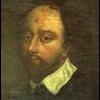
From the West Midlands to Yorkshire: the Tew Family of Sheffield
History dude replied to Richard Axe's topic in Sheffield Genealogy
-
I’m unsure from what source(s) the original of this list was drawn up but as with many such compilations, it should be treated with caution as it may not be the comprehensive document researchers assume or would hope for. If as I understand, it’s supposed to include both survivors and the dead on the South African War I can confirm that there’s at least one omission …that of my Grandfather who lived in the St Vincent’s District of the City and served in SA between 1899/ 1902 as: 6493 Riley Joseph Pte 2/East Yorkshire Regt …his service being confirmed in the official Medal Rolls for that War….documents which, so far as I know, have only been available to the Public in recent ( ‘Ancestry’ ) times.
-

Last steam passenger trains in Sheffield
History dude replied to a topic in Sheffield Buses, Trams and Trains
It doesn't mean it was the end of steam in the Sheffield area in 1966. For a B1, loco was used to provide steam heating preheating at Nunnery and Heeley Carriage sidings. It was based at Barrow Hill for a time. Plus, there could well have been industrial locos in the area. The National Coal Board did have the stuff to run them! It was sort of free, unlike diesel! -

Sheffield City Airport
Lysanderix replied to Lysanderix's topic in Sheffield Buses, Trams and Trains
There is a strong rumour that TUI wish to restart services from Finningley now that the Council has a long term lease on the airport and our Regional Mayor, apparently, has found funds to pay for reopening. iIf this comes to fruition I wonder what name the airport will use?

